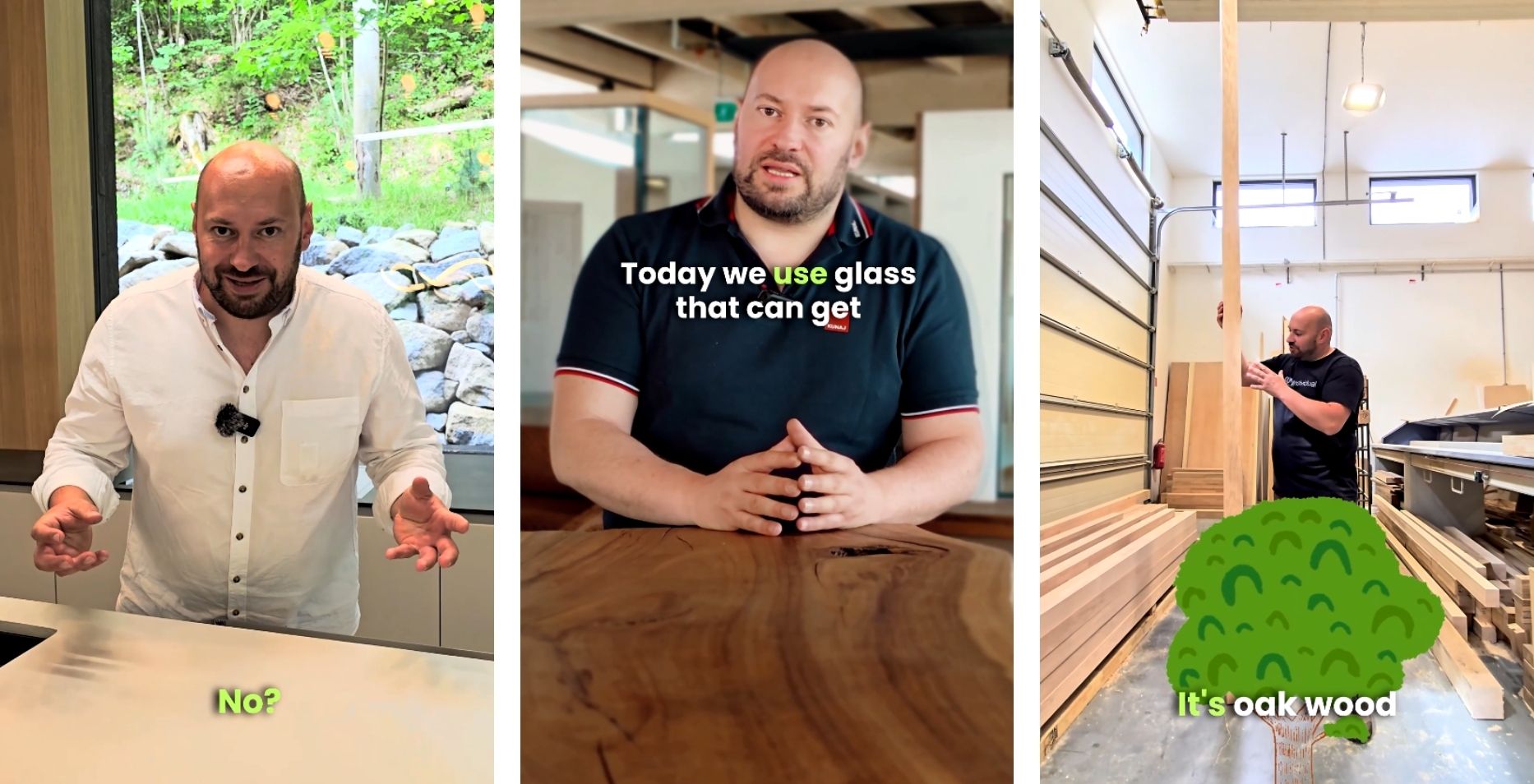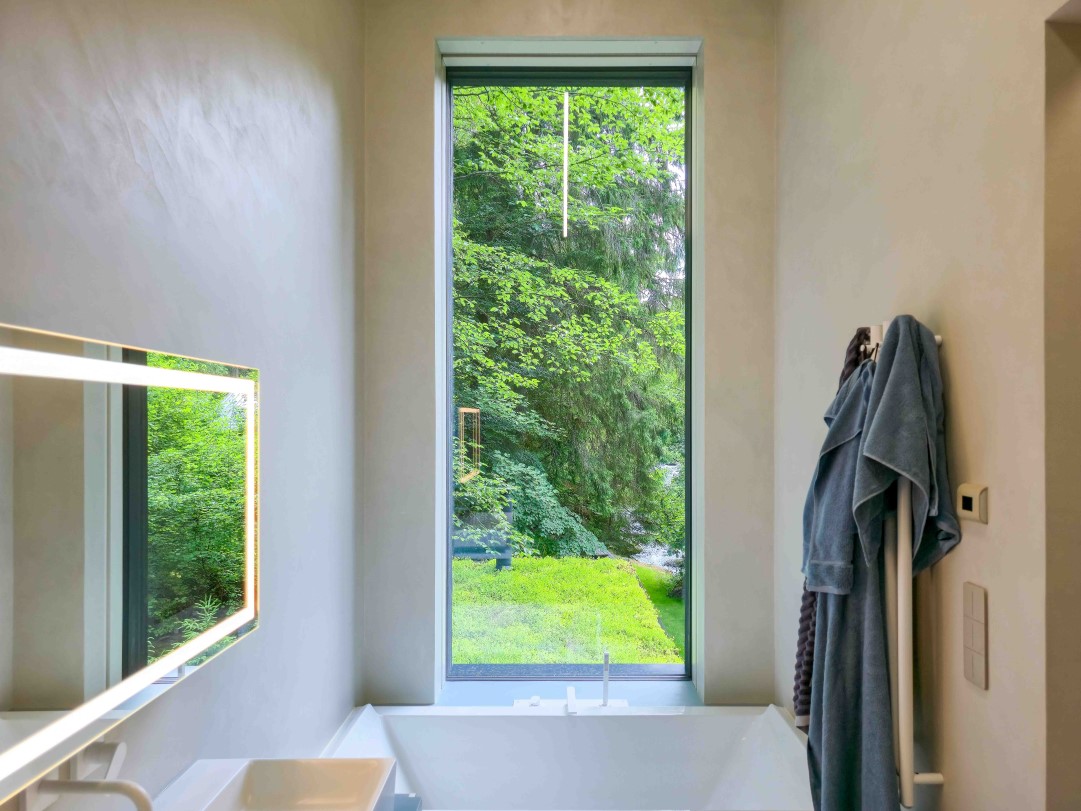Niektoré z najpopulárnejších možností tieniacej techniky pre okná sú:
- Rolovacie žalúzie - žalúzie, ktoré sa skladajú z rolky a látky, ktorá sa zvyčajne skladá z plastového materiálu alebo textilu. Rolovacie žalúzie sa dajú nastaviť na rôzne úrovne, aby sa zabezpečilo požadované množstvo svetla.
- Horizontálne žalúzie - žalúzie, ktoré sa skladajú z rovných horizontálnych lamiel, ktoré sa môžu otočiť na rôzne úrovne, aby sa zabezpečilo požadované množstvo svetla a súkromia.
- Vertikálne žalúzie - žalúzie, ktoré sa skladajú z vertikálnych lamiel, ktoré sa môžu otočiť na rôzne úrovne, aby sa zabezpečilo požadované množstvo svetla a súkromia.
- Plisé žalúzie - žalúzie, ktoré sa skladajú z vrstvy textilu, ktorý sa zväzuje do záhybov, keď sa žalúzie zdvihnú. Plisé žalúzie sú ideálne pre menšie okná a ponúkajú veľa možností farebného výberu.
- Rímske žalúzie - žalúzie, ktoré sa skladajú z látky, ktorá sa zdvíha do záhybov, keď sa žalúzie zdvihnú. Rímske žalúzie sú veľmi populárne pre svoj elegantný vzhľad a schopnosť poskytnúť jemné osvetlenie.
- Sieťové rolety - sieťové rolety, ktoré sa skladajú z priehľadného materiálu, ktorý umožňuje prechod svetla a zároveň poskytuje určitú úroveň súkromia.
Pozrime sa bližšie na tieto tipy žalúzií.
Rolovacie žalúzie
sú jednou z najpopulárnejších tieniacej techniky pre okná. Majú množstvo výhod, ale aj nevýhod, ktoré je dôležité zvážiť pri rozhodovaní sa, či sú vhodné pre konkrétny priestor.
Niektoré výhody rolovacích žalúzií zahŕňajú:
- Jednoduchá inštalácia - Rolovacie žalúzie sú pomerne ľahké a jednoduché na inštaláciu, čo znamená, že ich môže nainštalovať prakticky každý.
- Vynikajúca kontrola svetla - Rolovacie žalúzie umožňujú presnú reguláciu množstva svetla, ktoré prechádza oknom. Látkové rolovacie žalúzie umožňujú aj difúziu svetla, čím zabezpečujú príjemnú a rovnomernú osvetlenosť.
- Ochrana pred UV žiarením - Rolovacie žalúzie môžu byť vyrobené aj z materiálov, ktoré poskytujú ochranu pred UV žiarením. To znamená, že ochraňujú interiér pred blednutím a poškodením nábytku a iných predmetov.
- Jednoduchá údržba - Rolovacie žalúzie sa ľahko čistia a udržujú v dobrom stave. Môžu byť utreté mokrou handričkou alebo opláchnuté pod tečúcou vodou.
- Estetický vzhľad - Rolovacie žalúzie sú k dispozícii v mnohých farbách a dizajnoch, takže je možné ich prispôsobiť rôznym interiérom.
Nevýhody rolovacích žalúzií zahŕňajú:
- Zhoršená funkčnosť pri väčších oknách - Pri väčších oknách môžu byť rolovacie žalúzie nepraktické a ťažšie na ovládanie.
- Nižšia odolnosť materiálov - Niektoré druhy rolovacích žalúzií môžu byť náchylné na poškodenie, ak sú používané v oblastiach s vysokou vlhkosťou alebo nadmerným slnečným žiarením.
- Obmedzené možnosti regulovania teploty - Rolovacie žalúzie ponúkajú iba obmedzené možnosti regulovania teploty v miestnosti, pretože nemajú schopnosť udržiavať teplo v miestnosti počas zimy alebo izolovať miestnosť pred teplom počas leta.
- Zložitejšie čistenie - Rolovacie žalúzie sú jednoduché na údržbu, ale čistenie býva zložitejšie v prípade, že sa na nich usadí silnejší prach alebo špinavé škvrny.
- Potreba pravidelného nastavovania - Rolovacie žalúzie môžu vyžadovať časté nastavovanie, ak majú byť účinné pri regulácii svetla a teploty. To môže byť otravné a časovo náročné, najmä ak sa používajú v rôznych miestnostiach s rôznymi orientáciami okien.

Horizontálne žalúzie
sú tiež populárnou voľbou pre tieniacu techniku pre okná. Tu je zhrnutie ich výhod a nevýhod:
Výhody horizontálnych žalúzií:
- Flexibilita - Horizontálne žalúzie umožňujú presné nastavenie množstva svetla a sú užitočné pre situácie, kedy sa svetlo v miestnosti mení počas dňa.
- Regulovanie teploty - Tieto žalúzie môžu pomôcť udržiavať teplo v miestnosti počas zimy a izolovať miestnosť pred teplom počas leta.
- Ochrana pred UV žiarením - Horizontálne žalúzie môžu chrániť nábytok a podlahy pred poškodením spôsobeným UV žiarením.
- Jednoduché čistenie - Horizontálne žalúzie sú jednoduché na údržbu a čistenie.
- Estetika - Horizontálne žalúzie môžu prispieť k celkovému dizajnu miestnosti a sú k dispozícii v rôznych farbách a materiáloch.
Nevýhody horizontálnych žalúzií:
- Hlučnosť - Horizontálne žalúzie môžu byť hlučné, ak sa vetranie otvorí a fúka na ne.
- Potreba presného nastavenia - Presné nastavenie horizontálnych žalúzií môže byť otravné a náročné, najmä ak sú v miestnosti viaceré okná s rôznymi orientáciami.
- Vhodné pre niektoré typy okien - Horizontálne žalúzie nie sú vhodné pre niektoré typy okien, ako napríklad oblúkové okná alebo okná v tvare kruhu.

Vertikálne žalúzie
sú ďalšou možnosťou. Tu je zhrnutie ich výhod a nevýhod:
Výhody vertikálnych žalúzií:
- Flexibilita - Vertikálne žalúzie umožňujú reguláciu množstva svetla a ochranu súkromia.
- Prispôsobivosť - Vertikálne žalúzie sú vhodné pre okná rôznych tvarov a veľkostí, čo umožňuje ich použitie v rôznych typoch priestorov.
- Jednoduché čistenie - Vertikálne žalúzie sú jednoduché na údržbu a čistenie.
- Ochrana pred UV žiarením - Vertikálne žalúzie môžu chrániť nábytok a podlahy pred poškodením spôsobeným UV žiarením.
- Estetika - Vertikálne žalúzie prispievajú k celkovému dizajnu miestnosti a sú k dispozícii v rôznych farbách a materiáloch.
Nevýhody vertikálnych žalúzií:
- Hlučnosť - Vertikálne žalúzie môžu byť hlučné, ak sa vetranie otvorí a fúka na ne.
- Menšia účinnosť tienenia - Vertikálne žalúzie môžu nechať uniknúť viac svetla a tepla v porovnaní s inými tieniacimi technikami.
- Obmedzená kontrola svetelných podmienok - Vertikálne žalúzie nemusia byť schopné poskytnúť dostatočnú kontrolu svetelných podmienok v miestnosti.
- Ochrana súkromia - Vertikálne žalúzie poskytujú ochranu súkromia iba pri úplne zatvorených listoch. V opačnom prípade sa môže do miestnosti vidieť.

Plisé žalúzie
sú modernou tieniacou technikou, ktorá sa vyznačuje skladaním látky do záhybov. Tu je zhrnutie ich výhod a nevýhod:
Výhody plisé žalúzií:
- Flexibilita - Plisé žalúzie umožňujú reguláciu množstva svetla a ochranu súkromia.
- Estetika - Plisé žalúzie sú k dispozícii v rôznych farbách a materiáloch, takže sa ľahko prispôsobia dekoru miestnosti.
- Izolačné vlastnosti - Plisé žalúzie môžu pomôcť udržiavať teplo v miestnosti v zimnom období a chrániť miestnosť pred tepelným prehriatím v lete.
- Ochrana pred UV žiarením - Plisé žalúzie môžu chrániť nábytok a podlahy pred poškodením spôsobeným UV žiarením.
- Úspora energie - Plisé žalúzie môžu prispieť k úspore energie a znižovaniu nákladov na kúrenie a chladenie.
Nevýhody plisé žalúzií:
- Citlivé na prach a špinu - Plisé žalúzie sú citlivé na prach a špinu, čo môže znižovať ich životnosť a estetickú hodnotu.
- Ochrana súkromia - Plisé žalúzie poskytujú ochranu súkromia iba pri úplne zatvorených listoch. V opačnom prípade sa môže do miestnosti vidieť.
- Menšia účinnosť tienenia - Plisé žalúzie môžu nechať uniknúť viac svetla a tepla v porovnaní s inými tieniacimi technikami.
- Náklady - Kvalitné plisé žalúzie môžu byť drahé, ak sa porovnajú s inými tieniacimi technikami.
- Montáž - Plisé žalúzie môžu byť ťažšie na montáž v porovnaní s inými tieniacimi technikami.
V súhrne, plisé žalúzie sú modernou a esteticky príjemnou voľbou pre tieniacu techniku pre okná, ktorá poskytuje flexibilitu a mnoho funkčných vlastností. Ich výber závisí od konkrétnych požiadaviek a preferencií používateľa, ako aj od charakteristík priestoru, v ktorom budú žalúzie použité.

Rímske žalúzie
sú populárnou tieniacou technikou pre okná. Tu je zhrnutie ich výhod a nevýhod:
Výhody rímskych žalúzií:
- Estetika - Rímske žalúzie sú k dispozícii v rôznych materiáloch a farbách, a môžu sa prispôsobiť dekoru miestnosti.
- Regulácia množstva svetla - Rímske žalúzie umožňujú ľahké nastavenie množstva svetla, ktoré prechádza oknom.
- Ochrana súkromia - Rímske žalúzie poskytujú úplnú ochranu súkromia, keď sú úplne zatvorené.
- Úspora energie - Rímske žalúzie môžu pomôcť udržiavať teplo v miestnosti v zimnom období a chrániť miestnosť pred tepelným prehriatím v lete.
- Jednoduchá údržba - Rímske žalúzie je možné ľahko očistiť a udržiavať v dobrom stave.
Nevýhody rímskych žalúzií:
- Citlivé na vlhkosť - Rímske žalúzie môžu byť citlivé na vlhkosť a môžu sa deformovať alebo poškodiť v prípade, že sú vystavené vlhkému prostrediu.
- Menšia účinnosť tienenia - Rímske žalúzie môžu nechať uniknúť viac svetla a tepla v porovnaní s inými tieniacimi technikami.
- Náklady - Kvalitné rímske žalúzie môžu byť drahé, ak sa porovnajú s inými tieniacimi technikami.
- Montáž - Rímske žalúzie môžu byť ťažšie na montáž v porovnaní s inými tieniacimi technikami.

V textoch sme sa zameriavali na niektoré z najpopulárnejších tieniacich techník pre okná, ako sú rolovacie, horizontálne a vertikálne žalúzie, plisé a rímske žalúzie. Každý typ má svoje výhody a nevýhody a výber tieniacej techniky závisí od preferencií používateľa a požiadaviek na dané okno.
Rolovacie žalúzie sú praktické a jednoducho ovládateľné, avšak nemajú takú variabilnosť pri regulácii svetla a tepla ako niektoré iné typy žalúzií.
Horizontálne a vertikálne žalúzie sú cenovo dostupné a majú množstvo možností pre reguláciu svetla a tepla, avšak ich konštrukcia môže byť náchylná k poškodeniu a čistenie môže byť náročnejšie.
Plisé žalúzie sú vhodné pre menšie okná a majú vysokú variabilnosť pri regulácii svetla a tepla, avšak môžu byť drahšie a niekedy sa môžu hromadiť prach a špina.
Rímske žalúzie sú elegantné a majú vysokú kvalitu, avšak môžu byť drahšie a ich konštrukcia je zložitejšia ako u iných typov žalúzií.
Pri výbere tieniacej techniky je dôležité zvážiť vaše preferencie a požiadavky a vybrať si to najlepšie riešenie pre váš domov alebo kanceláriu.
































)%20(1).png)



































































